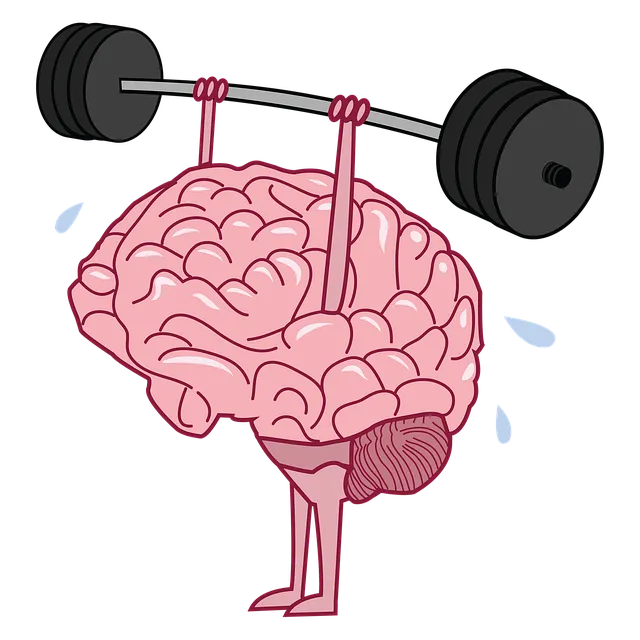Mental health literacy, as pioneered by Golden Kaiser Permanente's behavioral health providers, is a powerful tool for enhancing patient care and provider well-being. By educating individuals on recognizing and managing mental health conditions, this approach facilitates early intervention and promotes empathetic communication. Through evidence-based education programs tailored to diverse audiences, participants gain insights into common disorders and treatment options. Integrated risk assessment, conflict resolution, and cultural competency training further equip providers to navigate complex situations effectively. This holistic model not only improves patient outcomes but also prevents healthcare provider burnout, fostering a supportive work environment. Evaluating program effectiveness using KPIs ensures continuous improvement, ensuring Golden Kaiser Permanente's mental health education remains responsive and impactful.
Mental health education programs are essential in fostering well-being and resilience. This article explores a comprehensive approach to designing such initiatives, focusing on the integration of behavioral health providers as a key strategy. We delve into various aspects, from enhancing mental health literacy as a foundational step, to practical implementation strategies and engaging content design for diverse audiences. Drawing insights from Golden Kaiser Permanente’s successful model, we offer valuable guidance on evaluating and improving these programs, ensuring their impact on community well-being.
- Understanding Mental Health Literacy: The Foundation of an Effective Program
- Golden Kaiser Permanente's Approach: Integrating Behavioral Health Providers
- Designing Engaging Content: Strategies for Educating Diverse Audiences
- Practical Implementation: From Training to Community Outreach
- Evaluating and Enhancing the Program: Measuring Success and Continuous Improvement
Understanding Mental Health Literacy: The Foundation of an Effective Program

Mental health literacy is the cornerstone upon which effective program design for behavioral health initiatives rests. It involves equipping individuals with the knowledge and skills to recognize, understand, and manage mental health conditions effectively. A robust mental health education program should aim to foster this literacy among participants, particularly within the context of primary care settings, as advocated by Golden Kaiser Permanente’s behavioral health providers. This approach ensures that individuals can identify early signs of mental distress, seek appropriate help, and support their loved ones in similar situations.
By integrating evidence-based strategies into the program curriculum, learners gain valuable insights into various mental health topics, including common disorders, their impact on daily functioning, and available treatment options. Moreover, incorporating essential skills like risk assessment for mental health professionals, conflict resolution techniques, and healthcare provider cultural competency training empowers participants to navigate complex situations with empathy and proficiency. Such comprehensive education fosters an environment where open conversations about mental health thrive, leading to improved outcomes for both patients and providers alike.
Golden Kaiser Permanente's Approach: Integrating Behavioral Health Providers

Golden Kaiser Permanente has pioneered an innovative approach to mental health education by seamlessly integrating behavioral health providers into their healthcare system. This strategic move ensures that patients have easy access to comprehensive mental wellness support, addressing a critical gap in traditional medical settings. By fostering collaboration between primary care physicians and specialized behavioral health professionals, Golden Kaiser Permanente offers holistic crisis intervention guidance tailored to individual patient needs.
This integrated model goes beyond treating symptoms; it focuses on burnout prevention strategies for healthcare providers, ensuring that front-line staff are equipped with the necessary tools to manage their own mental well-being. This not only improves patient outcomes but also enhances the overall work environment, fostering a culture where mental health is prioritized and supported at all levels.
Designing Engaging Content: Strategies for Educating Diverse Audiences

Designing engaging content is paramount when creating a mental health education program aimed at diverse audiences, especially with stakeholders like Kaiser Permanente behavioral health providers in mind. The Golden Rule here is to adapt your approach based on cultural nuances and varied learning preferences. Incorporating interactive elements, such as case studies and role-playing scenarios, allows participants from different backgrounds to actively engage with the material, fostering a deeper understanding of mental wellness concepts.
For instance, integrating a Healthcare Provider Cultural Competency Training module that explores ethical considerations in diverse healthcare settings can be highly effective. Complementing this with multimedia elements like the Mind Over Matter Principles series, which leverages podcasts and videos to share personal narratives, makes learning more accessible and appealing. Additionally, leveraging these formats ensures that content is inclusive and resonates with a broader audience, ultimately enhancing the overall educational experience for Kaiser Permanente behavioral health providers.
Practical Implementation: From Training to Community Outreach

The successful implementation of a Mental Health Education Program requires a strategic shift from mere training to robust community outreach. After equipping Golden Kaiser Permanente behavioral health providers with comprehensive knowledge, the next step involves integrating this education into everyday practice. This includes fostering an environment where mental health discussions are normalized and accessible. By organizing workshops, seminars, and interactive sessions, healthcare professionals can enhance their skills in identifying and addressing mental health concerns among diverse populations.
Community outreach takes the initiative a step further by extending these educational benefits to the broader public. Through partnerships with local schools, community centers, and faith-based organizations, Golden Kaiser Permanente can promote mental wellness, dispel stigma, and encourage early intervention. This holistic approach not only aligns with the principles of Mental Health Policy Analysis and Advocacy but also addresses the critical need for Burnout Prevention among healthcare providers, thereby ensuring sustainable and compassionate care.
Evaluating and Enhancing the Program: Measuring Success and Continuous Improvement

Evaluating and enhancing a mental health education program is paramount to ensure its effectiveness and longevity. At Kaiser Permanente, behavioral health providers utilize a multifaceted approach to measure success and drive continuous improvement. Key performance indicators (KPIs) are established to track participant engagement, knowledge retention, and changes in mental well-being. These metrics provide valuable insights into the program’s impact, allowing for data-driven decisions.
One such successful strategy involves integrating crisis intervention guidance into the curriculum, empowering participants with tools to navigate emotional challenges. Additionally, empathy-building strategies have been implemented, fostering a supportive environment that encourages open dialogue and positive thinking. Regular feedback sessions, peer evaluations, and self-assessments further enhance the program by identifying areas for refinement, ensuring it remains responsive to the evolving needs of its participants.
Mental health education programs, such as those inspired by Golden Kaiser Permanente’s integration of behavioral health providers, are transformative tools that can significantly improve community well-being. By employing engaging content strategies and practical implementation, diverse audiences can be reached effectively. Evaluating program success through continuous improvement measures ensures that initiatives like these remain dynamic and impactful. Through understanding mental health literacy, designing tailored content, and fostering community outreach, we can create robust programs that drive positive change, mirroring the successful model set by Golden Kaiser Permanente’s behavioral health provider integration.






